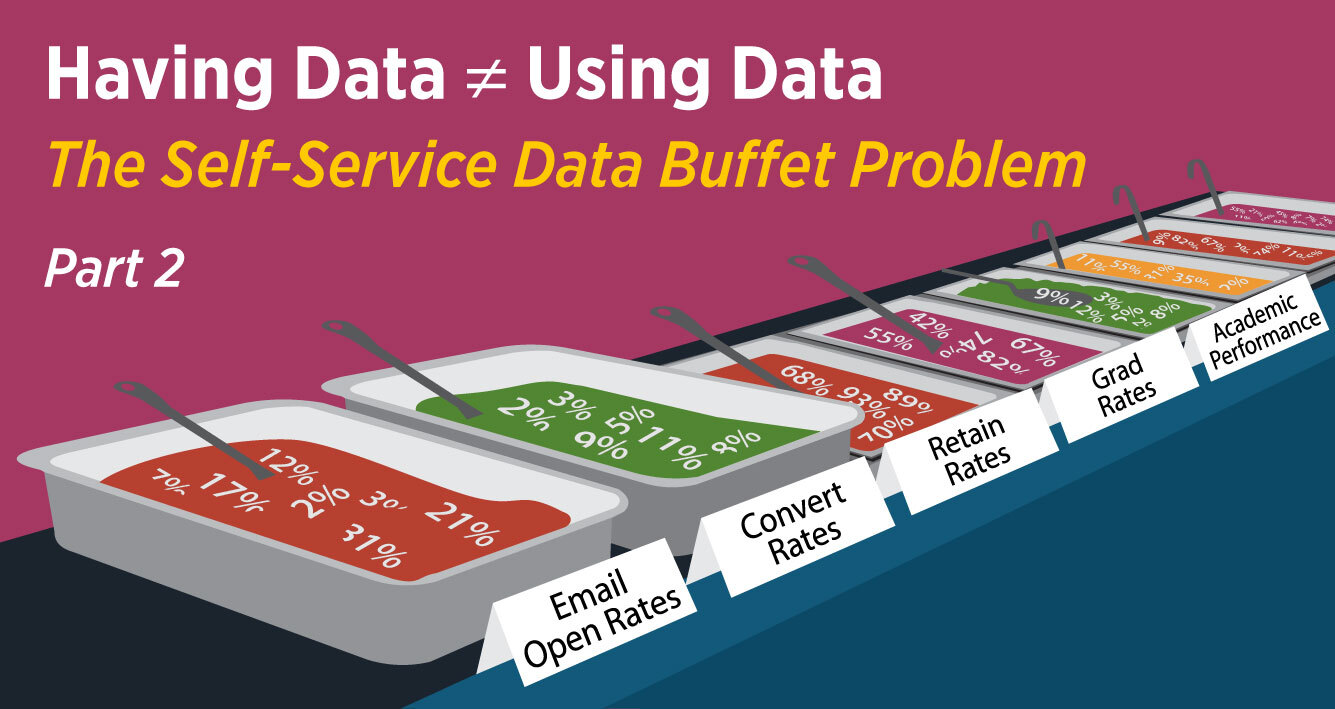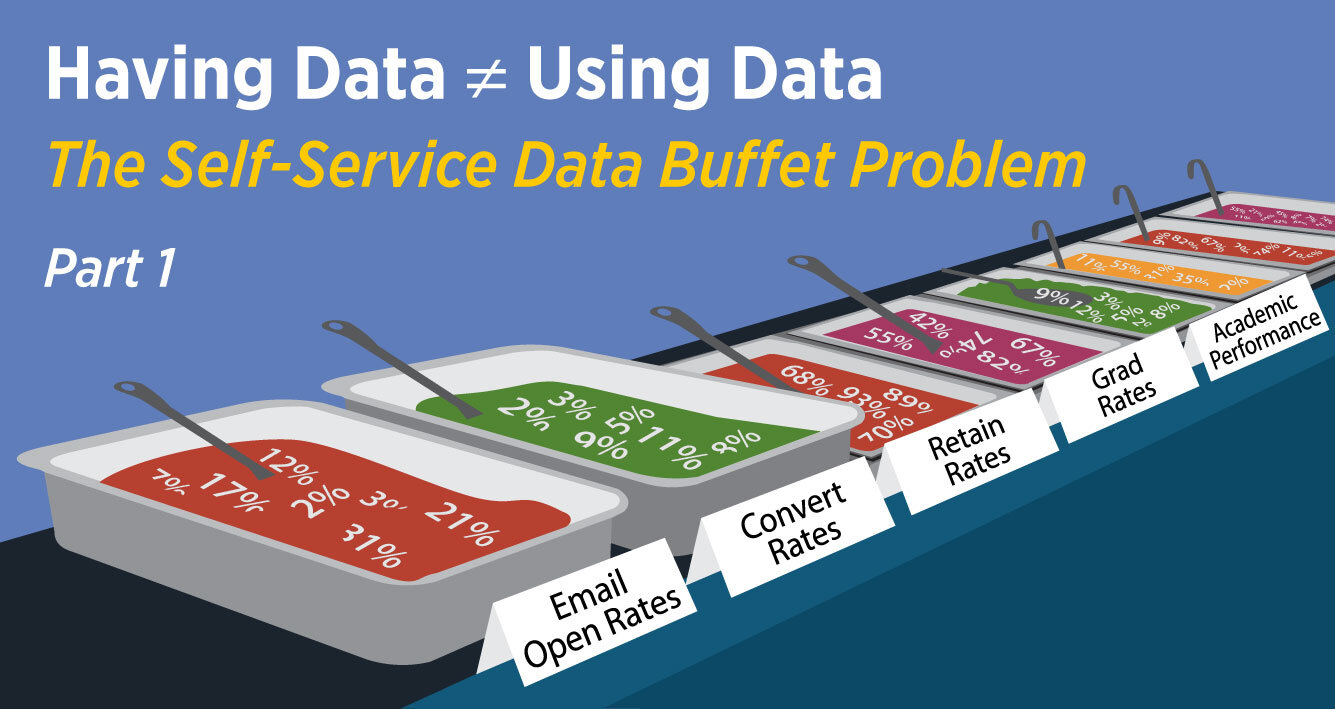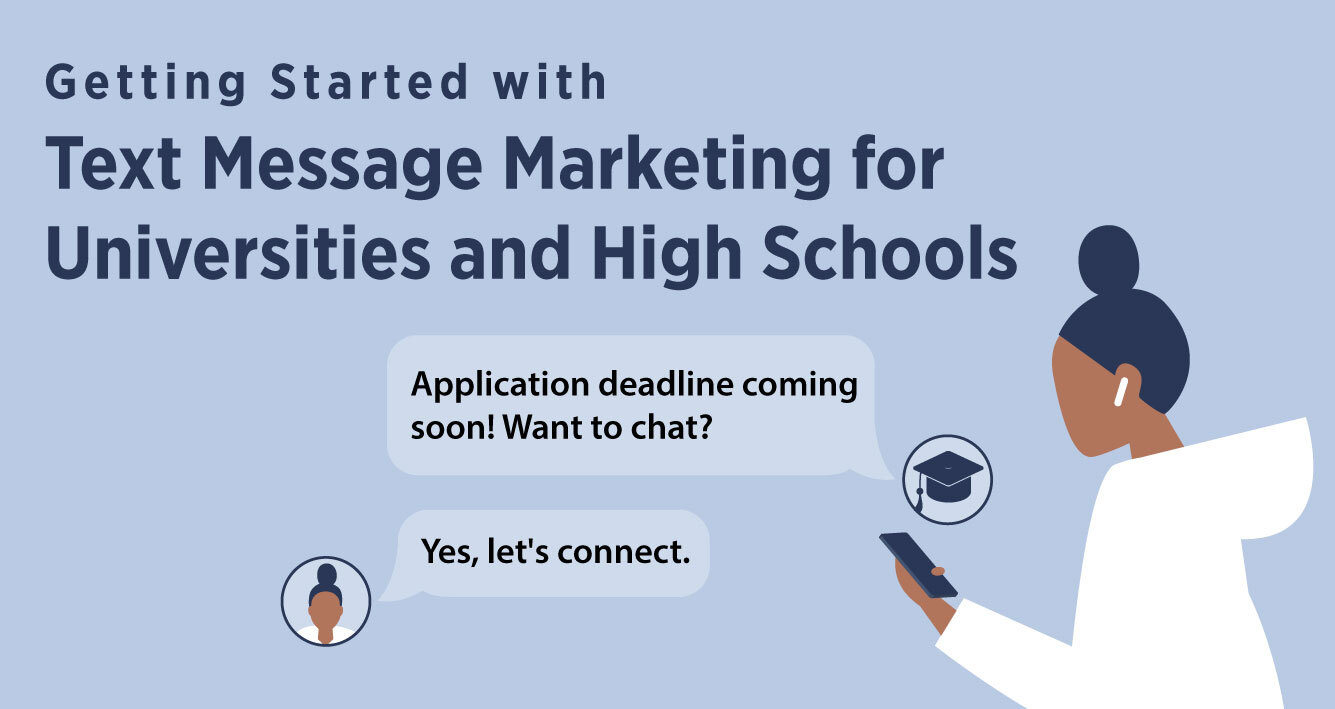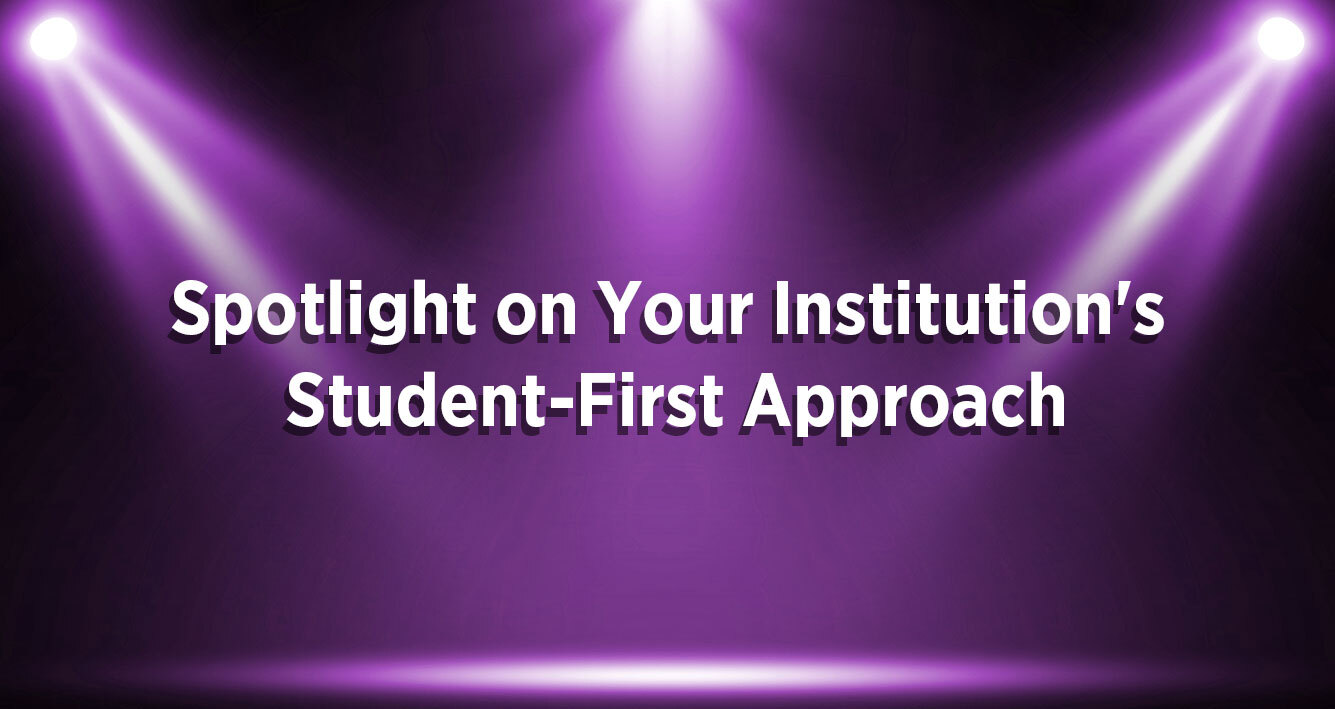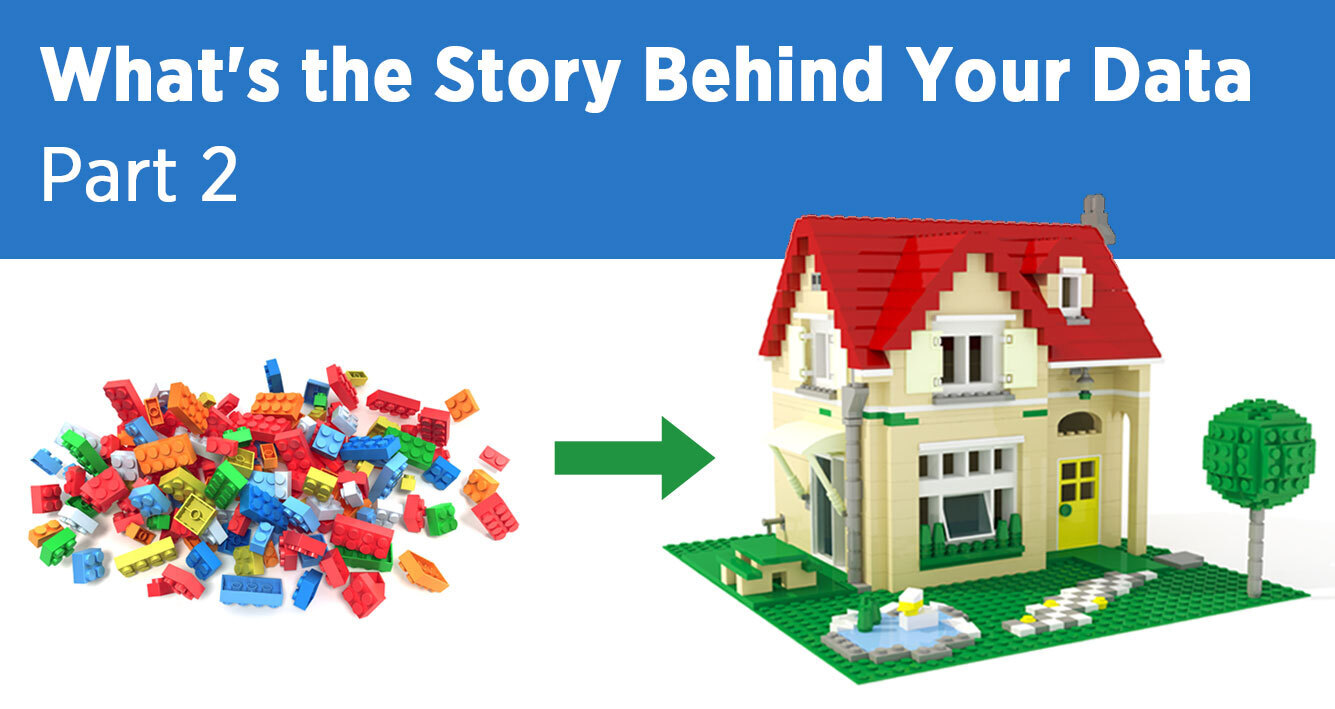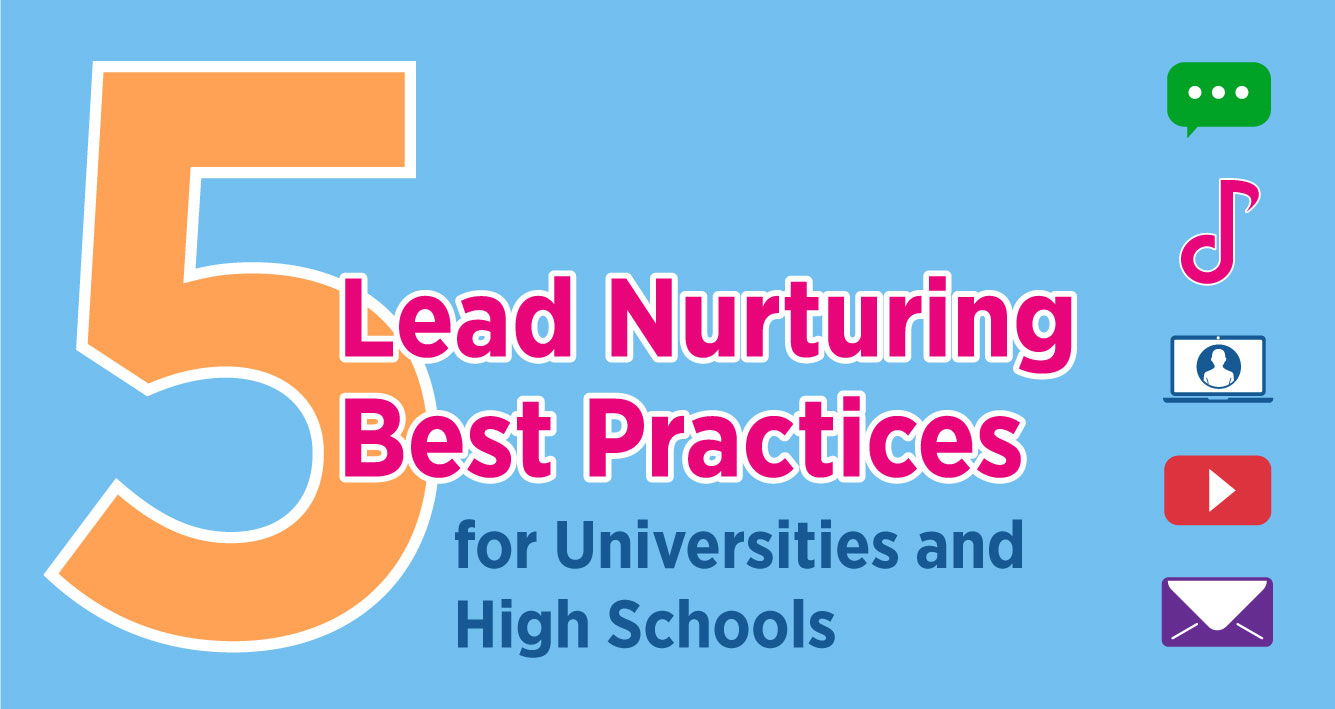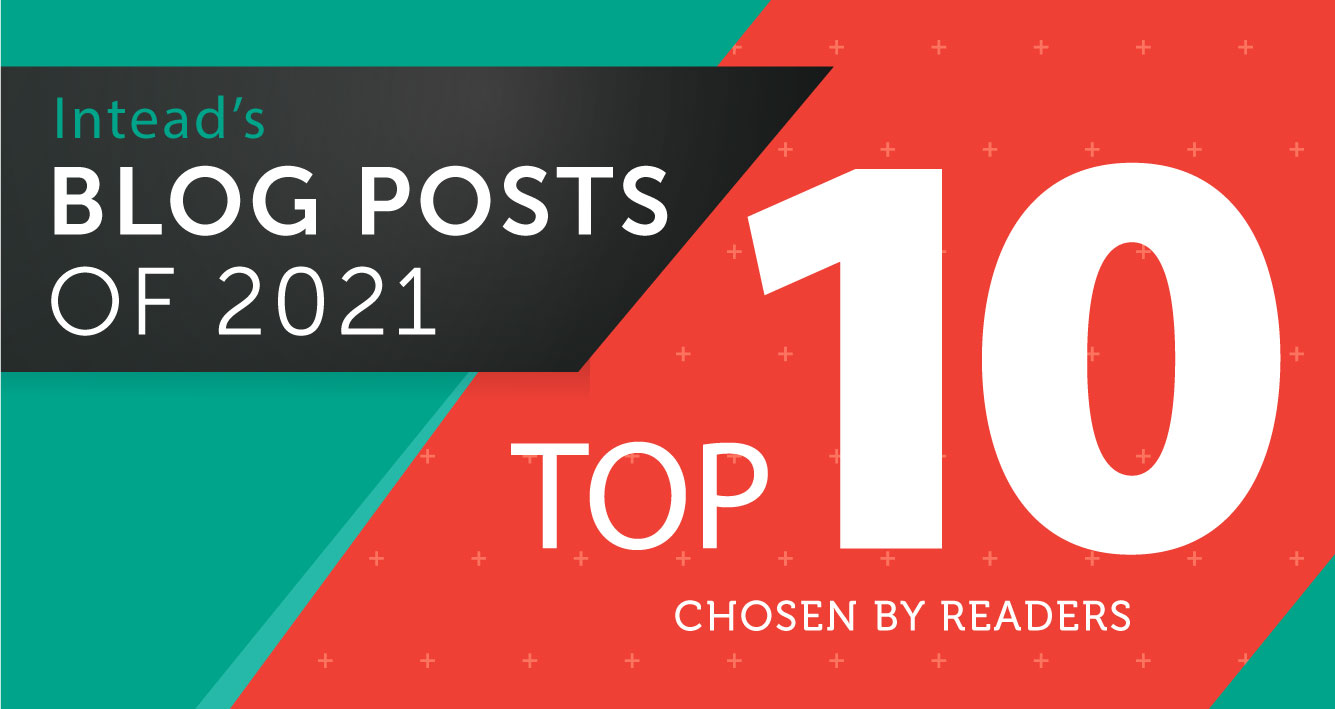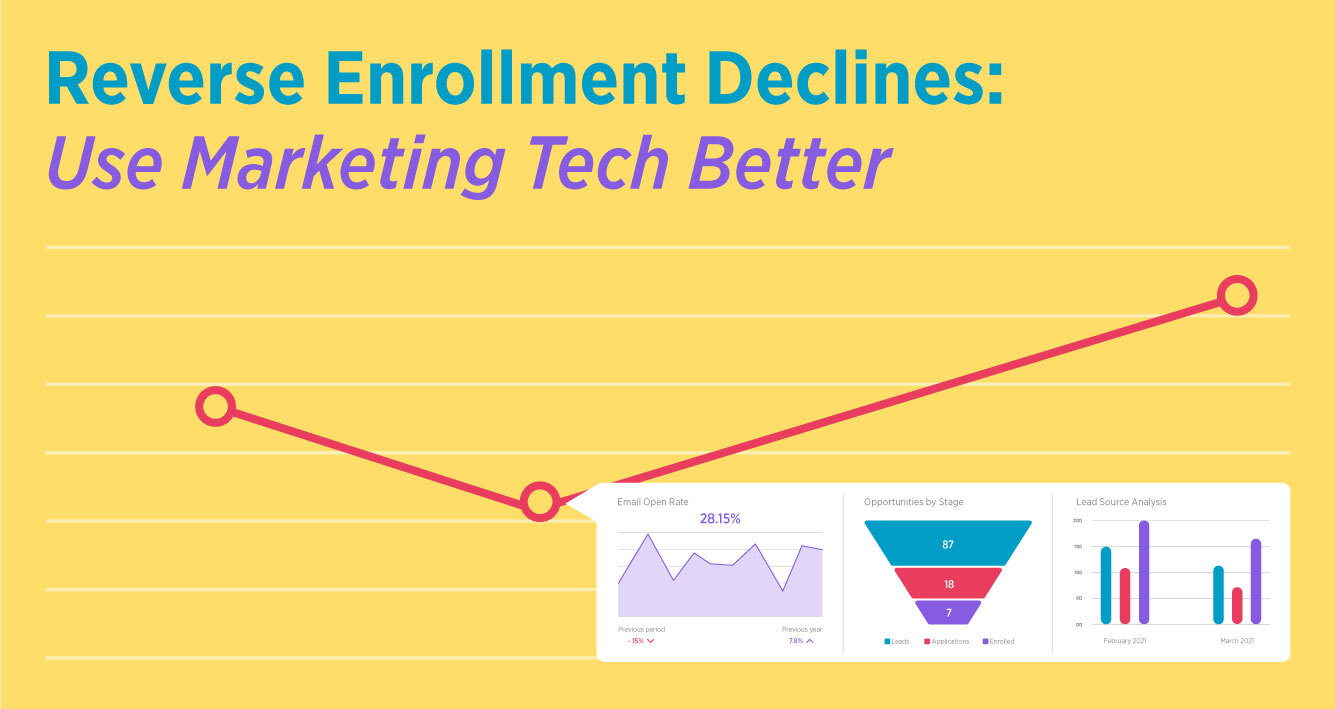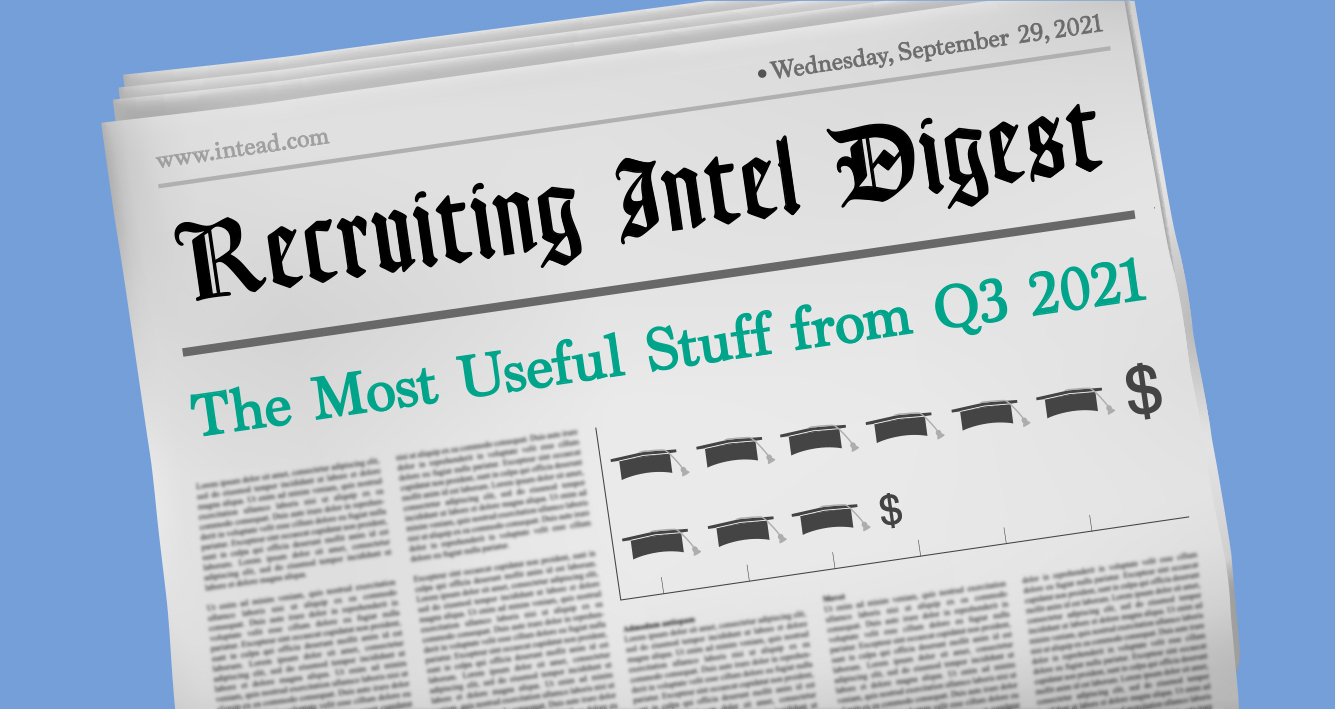Last week’s blog post helped define the data use problem (find Part 1 here). This week, taking us further into what to do about it.
Trust us, you’re not the only team whose data is not living up to its potential. It’s fairly common within teams and business units. It’s an issue of lack of time and/or lack of skills, but a problem worth solving.
Because, without well-played data, your team is making decisions based on gut reactions and are more likely to participate in group think. That route is often poorly informed and heavily biased. Data informs and confirms.
Data also drives curiosity. When your brain (or your team) has one of those aha! moments based on data, it craves more. New market opportunities start to unveil themselves. New approaches to doing the work (operations) emerge. Prospective student enrollment pain-points will become more apparent – and the ramifications of leaving those pain points unresolved.
Sure, data won’t solve these problems – that’s up to you – but it will help ensure the problems you’re solving are the ones worth pursuing. Data should be the foundation to most of the decisions you make.
Now, we don’t want to overstate it. Data is not magic (though what our data gurus pull out of the hat can feel like it!). It’s simply math. It’s what you do with that math – that’s the magic. And that’s why every team needs access to digestible data and why self-service data analytics should be a priority for you. It certainly is for us.
This week we offer a process for helping you do just that. It’s a practical 5-step approach that starts with goal-setting and collaboration. Read on.
Read More
